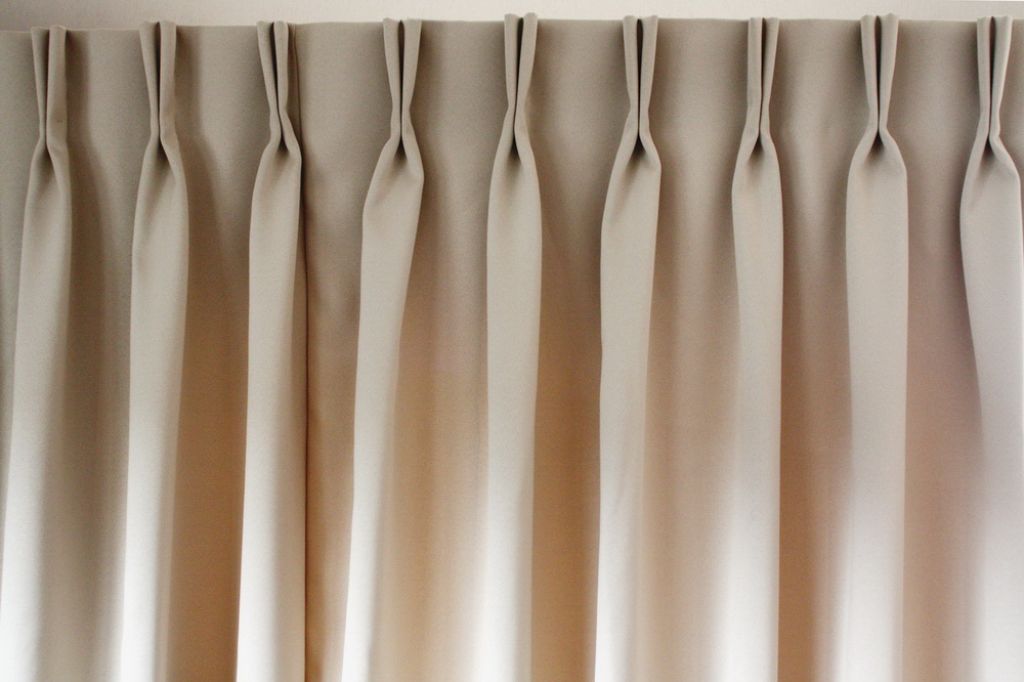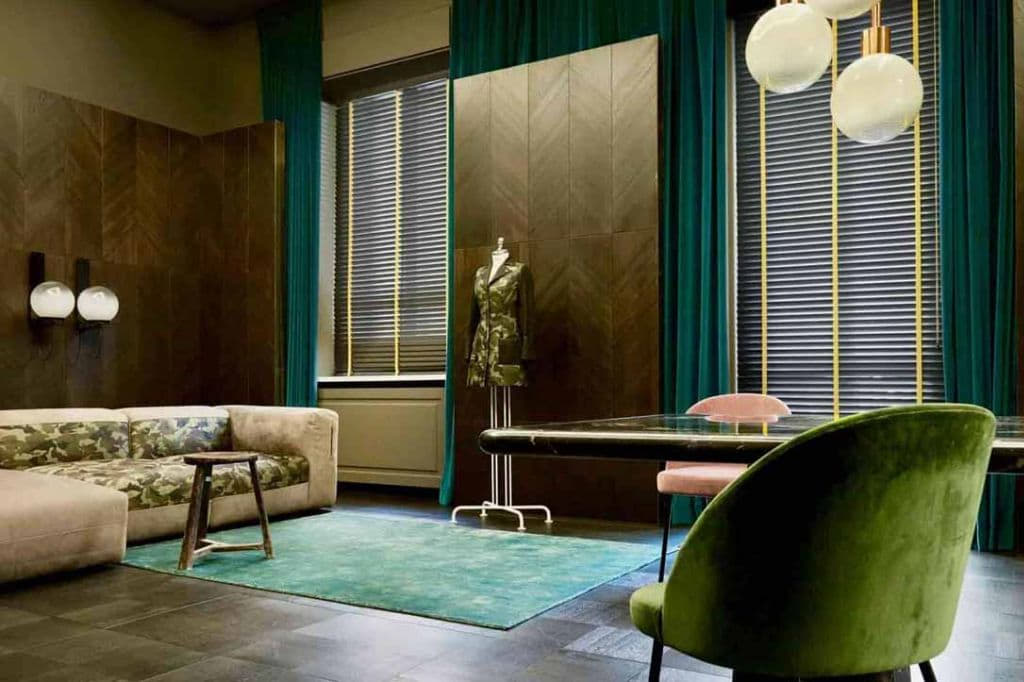Pinch pleats refer to a heading style of curtains. You can make your plain drapery or curtains new and attractive by adding pinch pleats to them. These pleats will make your living room, dining or bedroom look way more attractive than before.
Besides, there is no need to hire a professional for this purpose, you can make pinch pleats easily at home. So if you’re wondering how to make pinch pleat drapes that fit your style and space, it only involves the arrangement of curtain fabric with a stitch. It is very easy for a beginner as well, since all you need is a pleat tape and pins.
Up ahead in our discussion, we have mentioned all the materials and steps required to make pinch pleats successfully. You can make your living space ideally appealing by adding pinch pleats to your curtains with the help of this guide by Dubai Curtain.
Why Are Pinch Pleats A Popular Choice For Window Treatments?
Pinch pleats are one of the most popular styling ideas for window treatments because of the traditional look they provide.
You can add pleats to your drapes in different styles like pinch pleats, euro, or grommet pleats.
Moreover, adding French pleats to your long drapes will benefit you exceptionally because it saves space, and makes a room look highly sophisticated and graceful. Pinch pleats are also useful in setting the mood of a room and they also make it cozy and warm due to their high coverage.
Materials Needed
Fabric
- Fabric plays a significant role in making the perfect pinch pleats. When looking for the fabric that suits pinch pleating; you can choose velvet, silk, cotton, or insulating linen.
- The amount of fabric will be determined by the window frame’s size.
Lining
- The lining is a thin layer of fabric that is sewn on the back of the main fabric.
- The purpose of lining is to add insulation and to prevent the curtain from fading. You can choose cotton or polyester as the lining fabric.
Interlining
- Interlining is the fabric sewn between the back lining and the main curtain panel fabric.
- The interlining makes curtains thick, and energy-efficient, while also adding a light-blocking feature.
Thread
- Only use high-quality thread for sewing pleats.
- Ger a thread that seamlessly matches the color of your curtains.
Sewing Machine
- To stitch different layers and pleats on the curtains together, you’ll need a sewing machine.
- Use a sewing machine that can handle heavy-duty fabrics and can sew with zigzag stitches.
Pins
- Sewing pins are used to keep the fabric in place and to set the pleats perfectly.
- Use new and long pins to get the best results.
Measuring Tape
- Measuring tape is required for the measurement of the fabric and the window frame(s).
- You will need a tape measure with centimeter and inch readings.
Scissors
- A sharp pair of scissors is required to cut the lining cloth. Make sure that the scissors you use can seamlessly cut the thick fabric of curtains.
Steps to Make Pinch Pleat Curtains
1. Measuring and Cutting Fabric
1.1 Determining the Width
Measure the width of your window in inches, then add at least 4-6 inches on each side to create a fuller look. Plus, if you want a more gathered look, add seam allowances of at least 1 inch on each side after you have determined the width.
1.2 Determining the Length
Measure the height of your window from the top of the rod to where you want the curtains to reach.
For hemming and seam allowances, add 4-6 inches to this measurement.
1.3 Cutting the Fabric
Cut your fabric to the width and length you’ve decided on, making sure it’s straight and even.
2. Preparing the Fabric
2.1 Hemming the Bottom
Fold the fabric’s bottom edge up by 1 inch and press it with an iron. Fold the same edge up by 1 inch again and press. To make a clean hem, sew along the folded edge.
2.2 Hemming the Sides
Fold the fabric’s sides over by 1 inch and press. Fold the same edge over by 1 inch again and press. To get a clean hem, again sew along the folded edge.
3. Adding Interlining and Lining
Place the interlining on top of the main fabric and cut it to the same size. Pin the interlining to the top edge of the fabric and stitch it together. Then, with the right sides facing up, pin the lining to the fabric and sew along the top and sides of the fabric.
4. Creating the Pinch Pleats
4.1 Marking the Pleat Locations
Determine how many pleats you want and mark the locations with pins or chalk.
4.2 Folding and Pinning the Fabric
To make a pleat, fold the fabric in half with the right sides facing each other. Pin it in place and repeat with the remaining pleats.
4.3 Stitching the Pleats
To hold the pleats in place, sew along their upper edge.
5. Hanging the Curtains
Attach the curtain rings or hooks to the top of the curtains and hang them from the curtain rod.
Adjust the pleats as needed to achieve an even and fuller appearance.
Tips and Tricks
Best Fabrics for Pinch Pleat Curtains
Cotton, linen, silk, and polyester are all good fabric choices that hold the pleats perfectly and drape well. Besides, you should avoid fabrics that are too thin, such as sheer or lightweight materials.
Choosing the Right Curtain Rod
Select a strong and long-lasting curtain rod that can support the weight of the curtains, especially if it will be holding heavy fabrics. Consider the style and finish of the curtain rod, as it can affect the overall appearance of the curtains.
Common Mistakes to Avoid
When making pinch pleat curtains, some common mistakes that need to be avoided include using the wrong fabric, not calculating perfectly, not cutting the fabric straight, not aligning the pleats evenly, and not ironing the fabric before sewing.
To avoid making these errors, carefully follow the steps mentioned earlier and take your time to ensure a seamless-looking window treatment.
End Note
To sum up, making pinch pleat curtains is an excellent way to upgrade your living space and to add a touch of elegance to it. You can easily create pinch pleats on your curtains with a few materials, which are fabric, lining, interlining, thread, sewing machine, pins, measuring tape, and scissors. You can give the perfect treatment to your windows by following some simple steps, i.e. measuring and cutting the fabric, preparing the fabric, adding interlining and lining, and creating the pinch pleats.
Pinch pleats are a popular choice for window treatments that add warmth, comfort, and luxury to living spaces because of their traditional appearance.
And by reading this precise guide, you can make pinch pleat curtains at home without hiring a professional.




